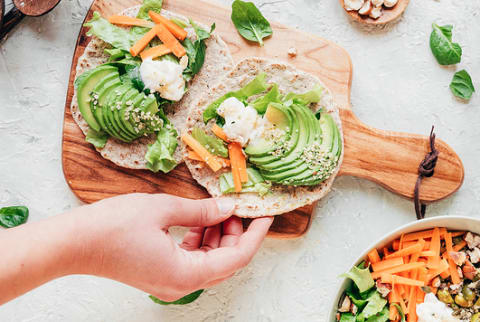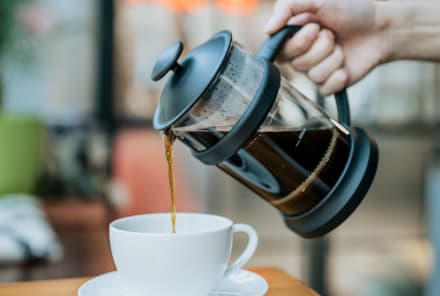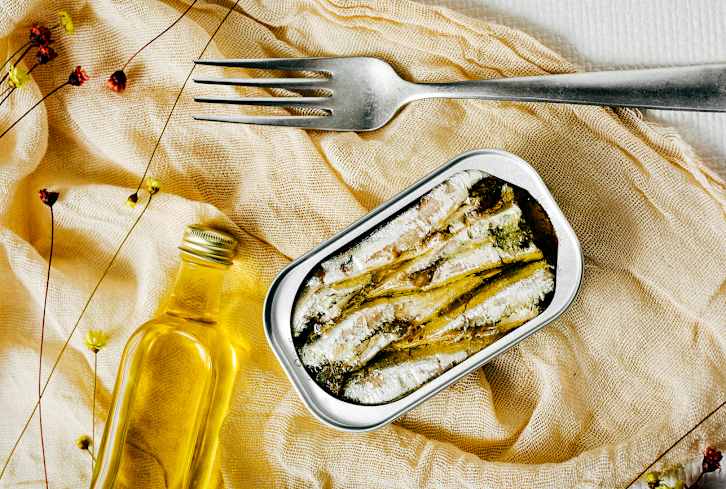Advertisement
The 5 Biggest Sources Of Inflammation + Exactly What To Do About Each


Dr. Amy Shah is a double board certified M.D. and one of mbg’s favorite holistic health experts. With training from Cornell, Columbia, and Harvard, she helps her patients get to the root cause of illness. This week, we’re sharing Dr. Shah’s approach to taming inflammation for optimal health and well-being. To learn more, check out her mindbodygreen class The Ultimate Guide To Inflammation.
Inflammation is not inherently bad; in fact, inflammation is the body’s natural defense against threat. Chronic inflammation, however, ignites when too many pro-inflammatory catalysts have built up and the body feels it needs to stay in defense mode all the time. This can lead to wide-ranging symptoms from daily headaches and bloating to foggy thinking. And while there are blood tests (like CRP and insulin level tests) that can also help you spot inflammation, all of this information can be extremely overwhelming.
So here, I'll break it down for you. Below are the five biggest triggers that lead to chronic inflammation. Start with these, and the rest is just extra credit. You should see changes in as little as two to four weeks!
1. Processed sugar and carbohydrates
It's a simple formula: Excess insulin equals inflammation. When blood sugar levels surge, the pancreas produces a rush of insulin, activating pro-inflammatory envoys called cytokines. This happens when we eat processed sugars but also with any high glycemic load (GL) foods—like refined carbohydrates—that spike insulin. Several studies have confirmed a low GL diet produces less inflammatory biomarkers.
Start with tracking your sugar intake for a day and then halving your sugar for the next day. Stretch goal: Try to eat 25 grams or less a day.
2. Omega-6 oils
We need omega fatty acids for the health of our brains, skin, bones, and metabolism. It's when the ratio of omega-6s to omega-3s gets out of whack that we become inflamed. Simply put: The more omega-3 we eat, the less omega-6 will be available to tissues to produce inflammation. In short, a diet high in 6s and low in 3s will increase inflammation; a diet high in 3s and low in 6s reduce it. Omega-6s are found in vegetable oils (safflower, sunflower, soybean), trans fats, processed foods, and grain-fed meat and dairy.
As a first step, you should switch all your cooking oils from canola and vegetable oils to coconut, avocado, or grapeseed oil. Stretch goal: In addition to changing your home oil, ask restaurants to use healthy oils or fats when they make your meal.
3. Mental stress
Chronic psychological stress activates the body's inflammatory response and can even genetically alter immune cells to poise them to fight perceived threat. This is because cortisol—the major stress hormone—influences the regulation of inflammation. Making time in your schedule for moments of stillness and calm can really make a difference.
Try to take five minutes each day to breathe in and out. The sheer act of concentrating on your breath can decrease brain stress. Stretch goal: Incorporate yoga or meditation into your schedule three times a week.
4. Body stress
Much like mental stress, the physical stress we inflict on our bodies triggers inflammation. Pushing the body past its limits at the gym or sacrificing sleep induces inflammation in the same way as banging your knee into a wall. Hitting it hard at CrossFit or pushing through long cardio sessions every single day can lower thyroid function and increase cortisol. Contrarily, interval training increases your HGH (human growth hormone) and slows aging, thereby reducing inflammation. Lack of sleep weakens the immune system, screws with hormones, and increases cravings for sugar and carbs—all direct paths to inflammation. To compare, getting sufficient sleep allows the immune system to strengthen and recharge—lowering inflammation.
You should sleep an average of eight or nine hours each night and alternate your exercise routine to include interval training and rest days. Stretch goal: Check resting pulse in the morning or download a heart rate variability (HRV) app to keep better track of your body's stress.
5. Environmental toxins
In our modern world, toxins are all around us. Literally—in our air, water, food, furniture, and beauty products—everywhere. Things like pesticides, herbicides, and heavy metals are endocrine disrupters, and they disrupt more than hormones, having adverse developmental, reproductive, neurological, and immunological effects. This spells inflammation, big time. The body is constantly trying to detoxify, and a toxin overload will alert it to inflame as a means of defending itself.
Here, you can start with removing plastic from your water bottles and containers. Stretch goal: In addition, only use natural beauty, bath, and cleaning products.
So there you have it! Being aware of these top aggravators of inflammation and taking concrete steps to reduce them in your daily life can make a world of a difference. Try it and see for yourself!

Dr. Amy Shah is a double board certified MD with training from Cornell, Columbia and Harvard Universities. She was named one of mindbodygreen's Top 100 Women In Wellness to Watch in 2015 and has been a guest on many national and local media shows. She helps busy people transform their health by reducing inflammation and eating more plants, utalizing the power of the microbiome to help digestion, natural hormone balance and food sensitivities. She is an expert on intermittent fasting for women and has a 2 week guided group program.
More from the author:
Functional Nutrition Training
Check out Functional Nutrition Coaching
A cutting-edge nutrition deep dive taught by 20+ top health & wellness experts
Learn moreMore from the author:
Functional Nutrition Training
Check out Functional Nutrition Coaching
A cutting-edge nutrition deep dive taught by 20+ top health & wellness experts
Learn more
Dr. Amy Shah is a double board certified MD with training from Cornell, Columbia and Harvard Universities. She was named one of mindbodygreen's Top 100 Women In Wellness to Watch in 2015 and has been a guest on many national and local media shows. She helps busy people transform their health by reducing inflammation and eating more plants, utalizing the power of the microbiome to help digestion, natural hormone balance and food sensitivities. She is an expert on intermittent fasting for women and has a 2 week guided group program.


















